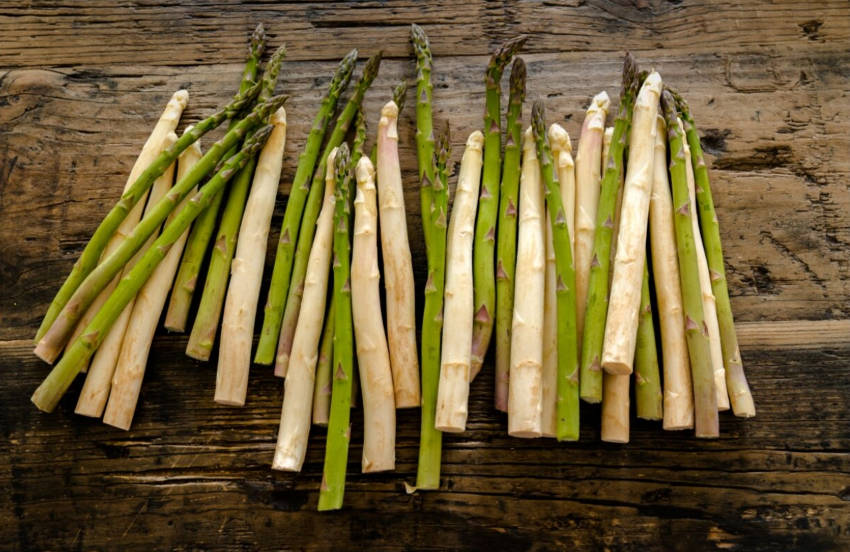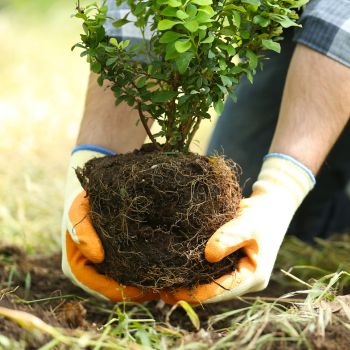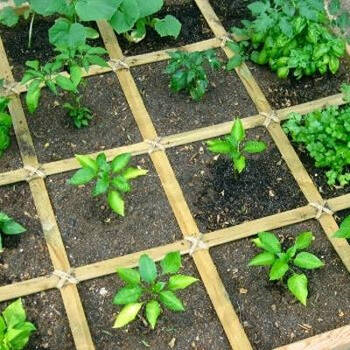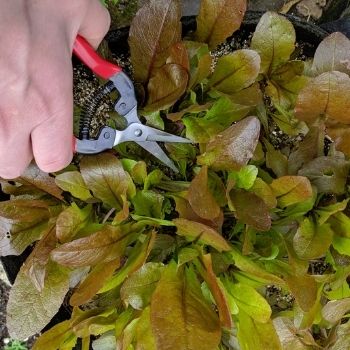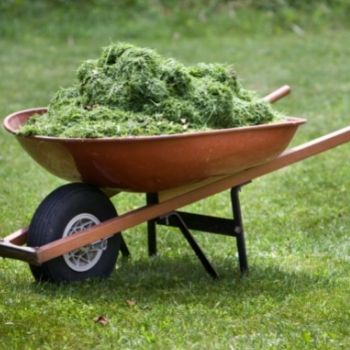Most plants rely on three key ingredients for healthy growth: good soil, fresh water, and plenty of sunlight. But as is usually the case in gardening, there are exceptions.
Occasionally, the amount of sunlight a vegetable receives can be deliberately reduced, to change the way it grows. This process is known as blanching, and it's used more often than you might think.
Why Is Blanching Done?
First of all, blanching in a gardening sense is different to the common kitchen technique. In culinary terms, blanching means to plunge prepared vegetables into boiling water, before refreshing in iced water. This is done to preserve colour and texture during freezing.
In the garden, blanching simply means removing or reducing the amount of sunlight a plant receives as it grows. This lowers the levels of chlorophyll it produces, changing its colour, texture, and flavour, sometimes dramatically so.
Most often, blanched vegetables have a softer, sweeter, and more refined flavour than in their unaltered state. They'll also be paler in colour, and more succulent where the originals can be tough and fibrous.
All in all, blanching takes the harshness out of a plant, making it less strident and more easily palatable. Whether that's a good thing or not is largely down to the plant's original characteristics and your own tastes.
Which Veggies Suit Blanching?
Not all vegetables are good candidates for blanching. In some, such as peppers, spinach, or rocket, the process will lessen the strong-tasting qualities which make these plants so desirable to grow.
In others, any beneficial effects will be outweighed by the growth-reducing stress caused by lowered light levels.
And lastly, many vegetables which were traditionally blanched have been selectively bred to be sweeter, paler, and more tender, meaning the extra effort is no longer necessary.
However, there are still plenty of vegetables where blanching is either frequently used, or can be used selectively to increase variety in your harvest.
Vegetables Which Are Usually or Often Blanched
There are several vegetables which are blanched almost whenever they're grown. Blanching is so commonly used, you might not even recognise the natural state of these vegetables, and could wonder why your own growing efforts are giving such different results.
Leeks - Blanching increases the proportion of soft, white leek flesh at the base, while reducing the amount of coarse green top that's usually discarded during cooking.
Bitter Leaves - While bitter leaves like endive and chicory make an impact in a salad, for most people they're naturally too strong to be palatable. Blanching will take the edge off their bitterness while still preserving their character.
Celery - As seen in the supermarkets, celery is rarely the vivid green of its natural state. Almost all commercially available celery is grown using some blanching for a lighter, less assertive product.
Artichoke - Blanching improves the tenderness of artichokes, and renders the stalks edible as well as the more usual petals and heart.
Vegetables Which Are Sometimes Blanched
Other vegetables don't need blanching to make them palatable, but will take on different characteristics if you do so, extending their versatility and variety.
Asparagus - Blanched, white asparagus is almost a different vegetable to the natural green spears. It's usually sweeter and juicier, and often thicker in the stem with less well-developed tips.
Cabbage - Tightly bunched cabbages will have naturally blanched inner hearts, but blanching the entire plant makes the outer leaves softer and more succulent.
Lovage - With its pungent celery-like flavour, lovage is loved or hated in equal measure. However, blanching makes the flavour much less intense, so that it's easier to incorporate into dishes without taking over.
Rhubarb - In its natural state, rhubarb can be so tart, tough, and fibrous it's almost inedible. Growing it under partial or total darkness produces a much sweeter and more tender result.
Lettuce - As with cabbage, hearting lettuces blanch their inner leaves naturally, producing pale, buttery cores. If this is to your taste, there's no reason you can't blanch an entire lettuce for an all-over effect.
How Is Blanching Done?
There are many methods of blanching, depending on the vegetable itself, the typical growing methods, and the materials you have to hand. These are some of the most common ways.
- Hilling Up Soil
Plants which grow partly underground can be blanched by piling the soil up around their bases as they grow. An obvious example of this technique is to prevent potato tubers turning green as they break the surface.
However, the same principle can be used for leeks and celery, covering up most of the plant to produce softer, whiter edible parts while leaving the foliage or tough upper stalk uncovered.
This hilling up of soil is often done by digging a trench to sow in, and slowly refilling it in as your vegetables grow.
- Straw Covering
As an alternative to hilling, simply pile straw over and around the plants as they grow to create a natural, light-reducing mulch. Use this technique for the same plants as previously, including celery, leek, or chard. However, the blanching is less efficient.
- Using Containers
The simplest, quickest blanching method is to place an upturned container over the top of your plant. This works best for smaller, bunching vegetables such as endive, chicory and other leaves. However, it's also useful for bigger stem plants such as rhubarb, if you have a large enough container.
- Cylinder Containers
For a less dramatic blanching effect, use a cylinder rather than a fully enclosed container, for example an opaque bottle with the top and base removed or PVC pipe. Placing this over your vegetable will blanch the stem while allowing some foliage growth to spill over the top.
- Forcing in Darkness
Rhubarb is often blanched by growing the entire plant indoors, in complete or near darkness. This full-dark technique is also called 'forcing', and produces sweet, tender plants earlier in the year without the mouth-puckering tartness of ordinary rhubarb.
It's also useful for crisp, bitter, hearting chicory varieties such as witloof or radicchio, increasing the amount of sweet whiteness in the leaves.
To use forcing, it's easiest to sow your plants in containers, which you can move indoors at the first sign of strong growth.
- Tying Leaves
Vegetables such as cauliflower can be blanched by draping their outer leaves over and around their inner parts, and securing them in place. The advantage of this is you get the blanching benefits for the vegetable's heart, while retaining plenty of open foliage for photosynthesis and growth.
- Overcrowding
Growing plants too closely together isn't usually a good idea, but it can be done purposefully if blanching is your aim. As the overcrowded plants grow, the dense foliage blocks sunlight from the lower parts. This can be useful for plants such as beetroot, softening up the stems for the table. However, avoid for vegetables with a tendency to bolt under stress.
- Cardboard Collars
Stem vegetables including leek and celery can be wrapped in loose collars made from folded newspaper, cardboard rolls, milk cartons, and so on. This blocks the light from the stem, while leaving the foliage free to grow.
- Wooden Boards
Lastly, for rows of plants, you can angle two wooden boards on their edges to form a triangular canopy. This method limits light, but allows air to flow through, useful for plants at risk of mold.
Timing Matters: When to Blanch
For stem plants which are partially blanched, such as with the soil hilling method, you can blanch as a continuous, gradual process. As the vegetable grows, continue to cover a steady proportion of it while leaving the foliage uncovered.
For other blanching methods, timing is important. By removing sunlight, you're putting the plants under stress and reducing their growth potential. Blanching too early, for most plants, will stunt growth and prevent a meaningful harvest.
On the other hand, if you leave it too late, you may not receive the full blanching benefits, but risk killing off the plant.
In general, look for plants which are healthy and are nearing their final size, but aren't yet fully developed. Blanching these for the last stage of growth will tend to give the best combination of sweetness and size. However, this is an area where there's little substitute for experience, so experimentation is key.
For all but the most bitter vegetables, blanching is an option rather than a necessity. But the improvements it can make to the taste and appearance of your crops makes it a skill that's well worth adding to your gardening repertoire.
Below: Blanching leeks in PVC pipe
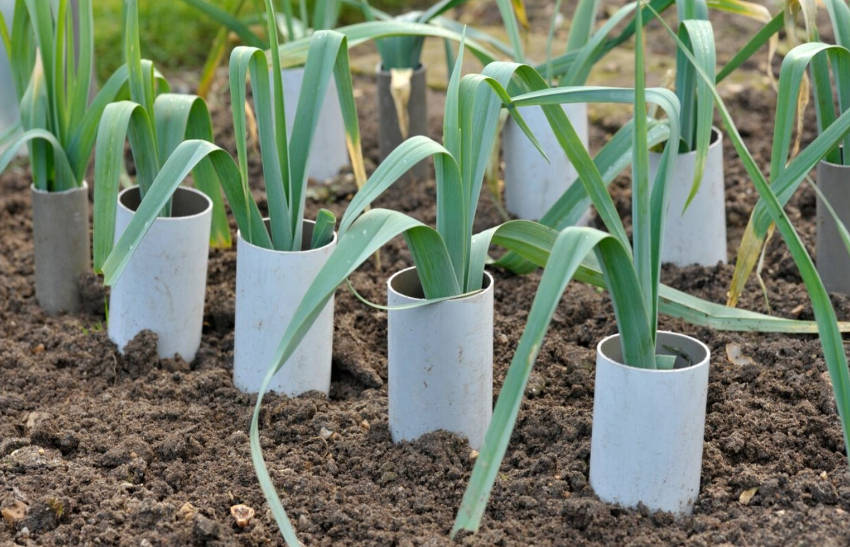
Below: Blanching potatoes by hilling up soil
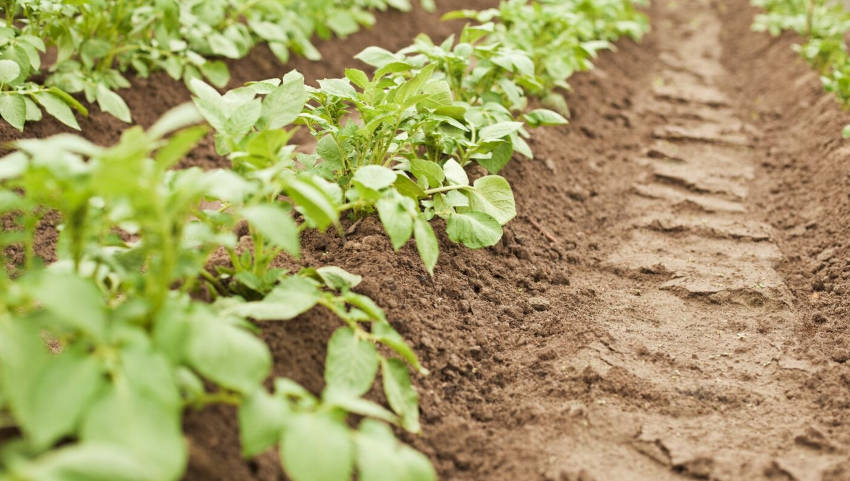
Below: Blanched versus naturally grown Asparagus
